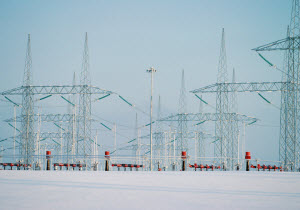
A telecommunications company has reached a settlement with OSHA resolving litigation surrounding the electrocution death of an employee in 2011 in Brooklyn. Under the agreement, the company will pay a fine of $147,000 and make changes to its electrical safety training. Keep reading to find out what you can do to avoid such a tragic and costly outcome.
OSHA Regional Administrator Robert Kulick commented, “While no settlement can bring this worker back to his family, co-workers, and friends, this agreement can help prevent similar and needless tragedies in the future.”
The fatality occurred when a field technician came into contact with an energized power line as he worked from an aerial lift bucket. OSHA determined that field technicians were not adequately trained, did not wear proper protective gloves, and did not ground the suspension strand they were installing.
The settlement was filed with the Occupational Safety and Health Review Commission, which reviews contested cases.
Keep your employees away from power lines!
Every year, hundreds of workers are killed, and thousands are injured and burned by contact with overhead power lines.
Make sure your employees use safe work practices to avoid accidents like the one that claimed the life of the technician:
- Nonqualified workers must maintain a minimum clearance of at least 10 feet from overhead power lines.
- Treat all overhead power lines, transformers, and other electrical distribution equipment as energized until you know otherwise.
- Remember that minimum clearance distances include conductive tools as well as body parts. In other words, don’t just maintain the minimum clearance distance yourself—make sure your tools don’t approach the power lines within the danger zone also.
- Qualified workers servicing power lines or performing telecommunications operations such as installing suspension strand must wear rubber insulating gloves rated for the applicable voltage and use insulated tools and other equipment as appropriate.
- Train workers who will be exposed to hazards from overhead power lines on safe work practices, including required PPE and grounding procedures.